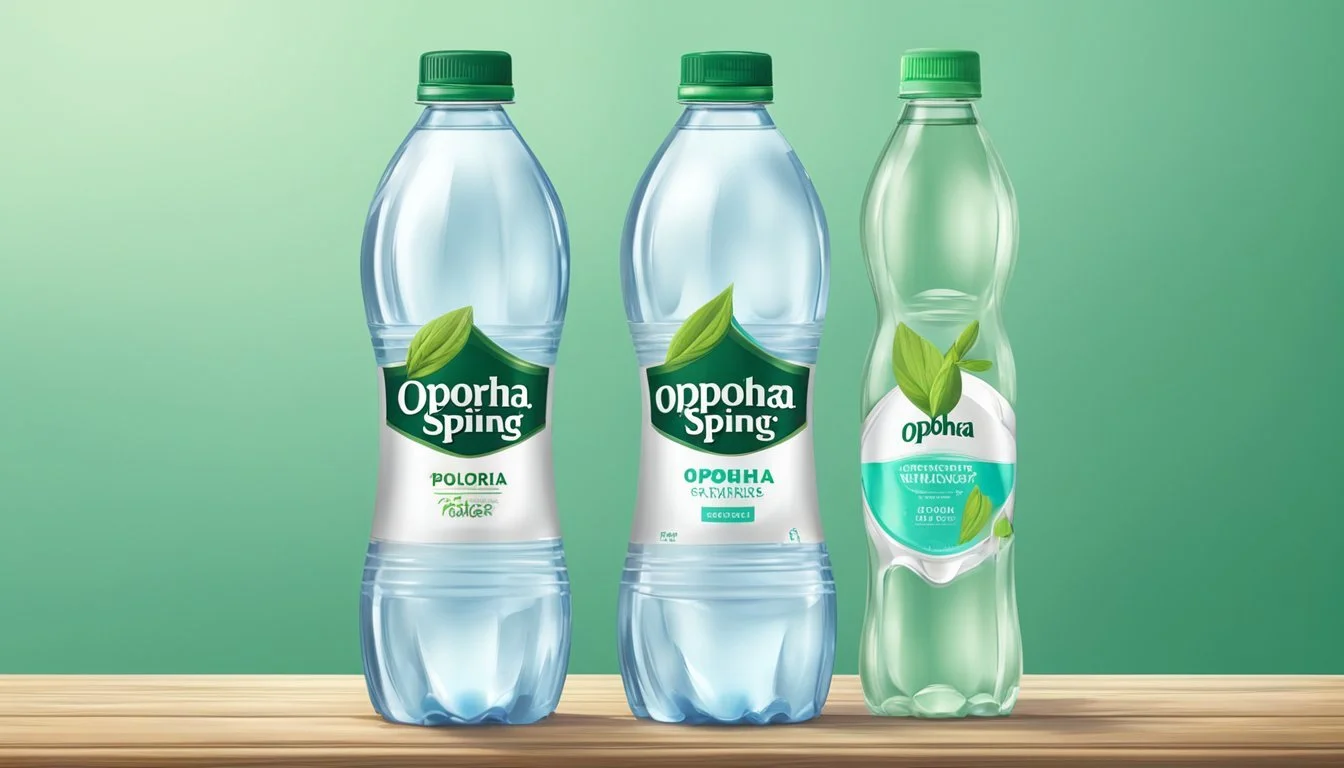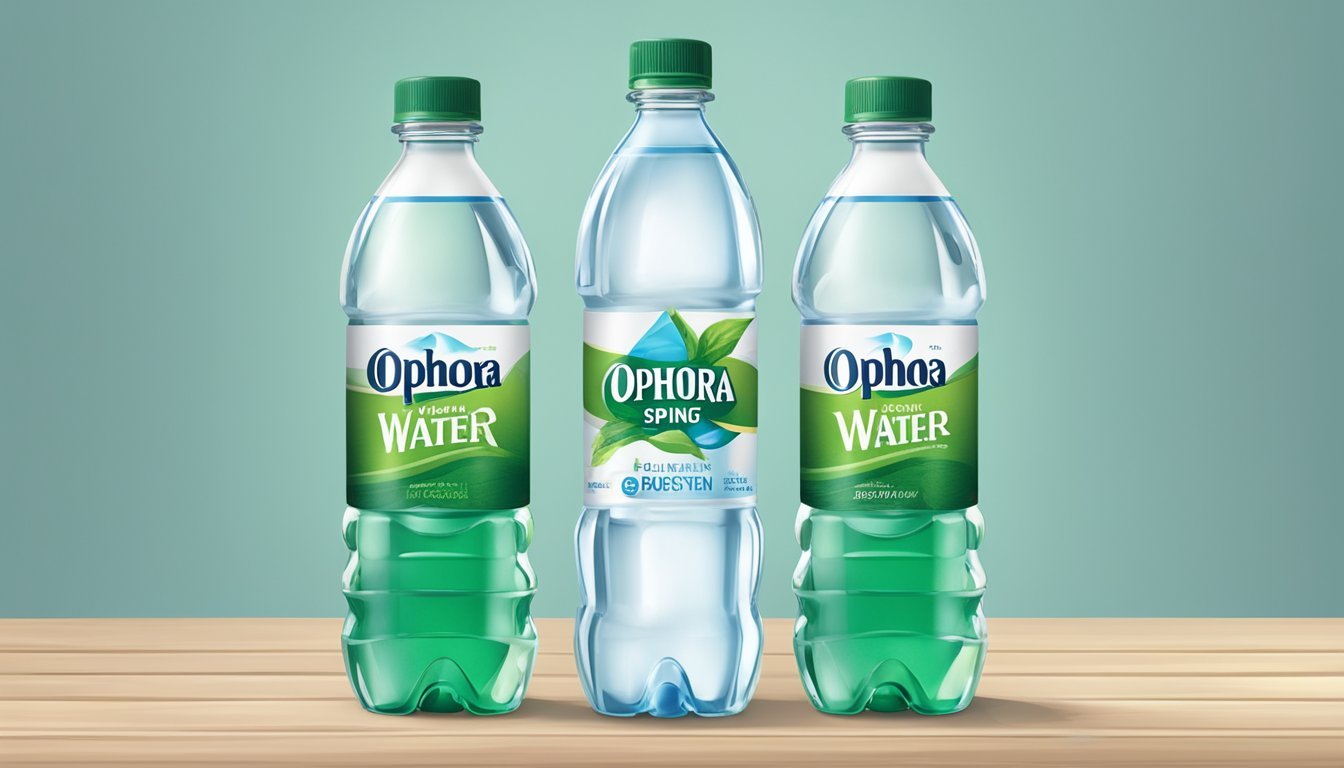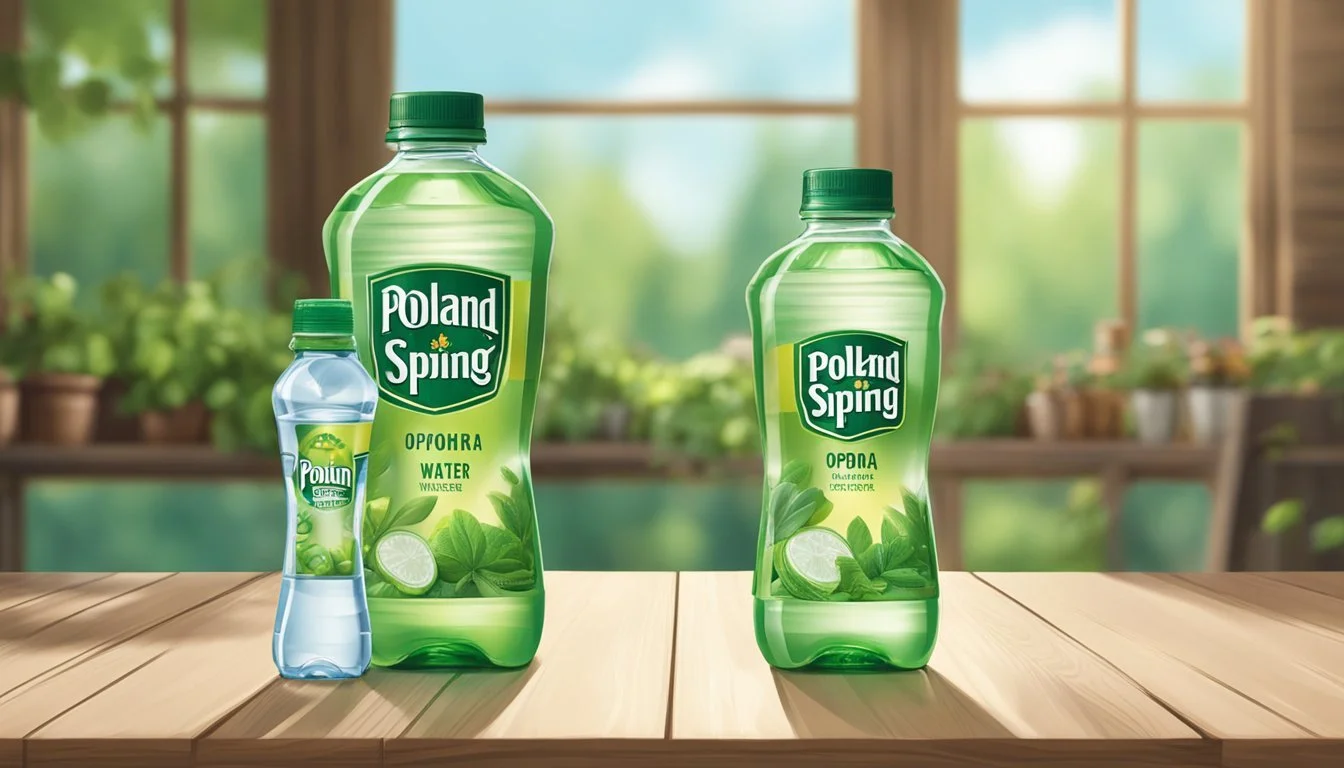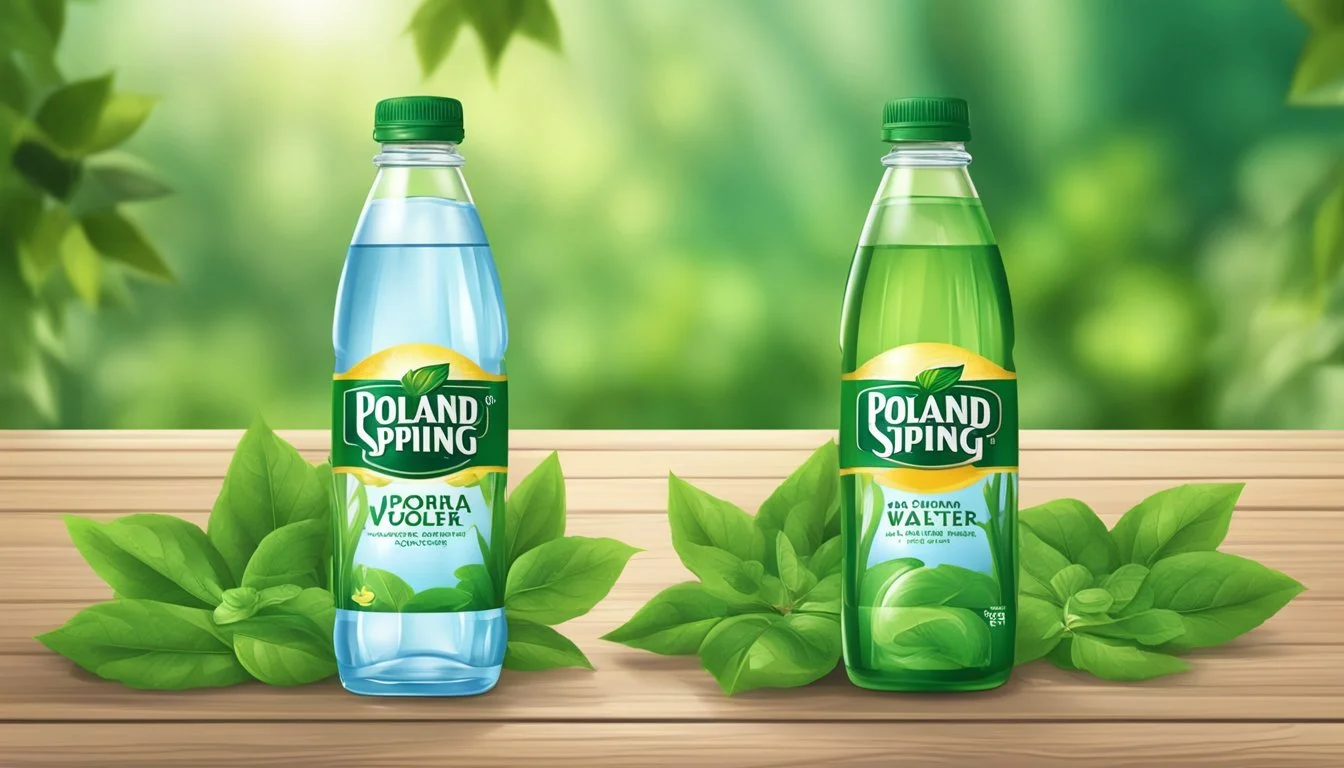Poland Spring vs. Ophora
Which Bottled Water is Better for You?
Choosing between Poland Spring and Ophora bottled waters presents a significant consideration for those who prioritize quality and purity in their hydration. While Poland Spring, a staple in the bottled water market known for its accessible price and readily available supply, has garnered a dedicated following, its water undergoes rigorous testing to meet FDA and EPA standards. In contrast, Ophora positions itself as a luxury brand that boasts advanced oxygenation technology and claims superior purity levels, appealing to consumers willing to invest more for perceived health benefits.
Poland Spring sources its water from numerous springs in Maine, providing a consistent taste familiar to many East Coast residents. The brand's affordability and widespread distribution make it a convenient choice for everyday hydration. On the other hand, Ophora's high-end offerings emphasize cutting-edge filtration and oxygen enhancement, tailored to those seeking premium hydration solutions. This difference reflects broader market trends where accessibility and luxury intersect in the competitive bottled water industry.
For those who value both economic and health considerations, understanding the distinct characteristics of these two brands can guide their choice. Poland Spring's reliable and tested product may cater to the masses, whereas Ophora targets a niche market with its promise of heightened purity and health benefits. Each brand holds a unique appeal, suggesting that the best choice depends on individual preferences and priorities in bottled water consumption.
Background on Bottled Water
Bottled water has become a crucial part of modern life, with significant differences among brands in terms of source, quality, and regulations. This section provides a detailed look into the industry's evolution, an overview of popular brands, and the regulatory standards they must adhere to.
Evolution of the Bottled Water Industry
The bottled water industry has experienced significant growth over the past few decades. Early bottled water was marketed primarily for health and medicinal purposes. Advances in purification and bottling technology led to increased availability and affordability.
Today, bottled water comes from various sources, including springs, wells, and municipal supplies. The industry's expansion resulted in greater scrutiny and the establishment of stricter quality standards. Innovation continues to drive growth, with trends focusing on sustainability and enhanced water products.
Water Brands Overview
Poland Spring, a prominent spring water brand, sources its water from multiple springs in Maine. It claims adherence to stringent quality standards as per FDA and EPA guidelines. Poland Spring provides natural mineral content that is believed to enhance taste and health benefits.
Ophora, on the other hand, is known for its ultra-purified water with added electrolytes and oxygen. This brand focuses on health-conscious consumers seeking enhanced hydration benefits. Both brands cater to different audiences, emphasizing varying selling points such as natural minerals or advanced purification techniques.
Bottled water options vary widely from affordable filtered water like Aquafina to premium spring waters such as Mountain Valley, each offering unique benefits tailored to consumer preferences.
Regulations and Standards
The safety and quality of bottled water are governed by regulations set forth by the FDA and EPA. The FDA enforces standards for bottled water under the Federal Food, Drug, and Cosmetic Act. Bottled water must meet quality criteria similar to those set for tap water by the EPA.
These regulations cover microbiological, physical, chemical, and radiological contaminants. Bottled water producers often undergo third-party testing to ensure compliance. Labels must accurately reflect the water's source and treatment methods, providing transparency for consumers.
Strict adherence to these standards assures consumers of the safety and quality of their bottled water choices.
Effective regulation is crucial for maintaining public trust and ensuring health benefits from bottled water consumption.
Analyzing Poland Spring
Poland Spring is a well-known bottled water brand sourced from multiple locations in Maine. Its production process emphasizes purity and natural mineral content to deliver a fresh-tasting product to consumers.
Origin and Source
Poland Spring comes from various regions in Maine. Initially, the water was sourced from a spring in the town of Poland, Maine.
Due to rising demand, the brand now uses multiple springs across the state. These include springs in Fryeburg, Poland, and Kingfield among others.
Each of these sources includes 100% natural spring water. The diverse locations help maintain a consistent supply.
Production Process
The production process for Poland Spring focuses on maintaining water purity. The water is carefully extracted from natural springs and undergoes minimal processing to retain its natural qualities.
The water is first collected and then filtered to remove any contaminants.
Poland Spring employs stringent quality control measures to ensure the water meets safety and health standards.
The filtration and bottling take place in close proximity to the various spring sources. This helps in preserving the mineral content and taste profile of the water.
Taste and Mineral Content
Poland Spring is known for its crisp and refreshing taste. The water contains naturally occurring minerals, contributing to its unique flavor profile.
Key minerals found in Poland Spring include calcium, magnesium, and sodium.
The mineral content is low enough to maintain a neutral taste, suitable for everyday consumption.
Consumers appreciate Poland Spring for its consistent taste, which stems from its careful sourcing and production processes. This makes it a popular choice among those seeking reliable, natural spring water.
Assessing Ophora Water
Ophora’s water offers a distinctive profile, sourced with meticulous care and undergoing advanced purification processes. Each aspect of Ophora’s production aims to enhance water quality and deliver notable health benefits through rigorous standards.
Sourcing and Purity
Ophora sources its water from pristine natural springs known for their exceptionally low levels of impurities.
The company emphasizes maintaining the water's natural composition, ensuring it remains free from pollutants and contaminants. Only sources meeting the highest purity criteria are selected. This dedication to quality ensures that Ophora water not only tastes clean but also retains essential minerals beneficial for health.
Purification Techniques
Ophora employs a proprietary purification system known as Hydro-7.
This process integrates several advanced techniques, including reverse osmosis and ozone disinfection. The multi-step filtration process removes impurities to ensure the highest purity levels. Hydro-7 is designed to maintain the water's natural balance while removing contaminants, which distinguishes it from typical bottled water brands.
Health Benefits and Quality
Ophora’s purified water is not only clean but also structured to enhance health benefits.
The Hydro-7 process aims to improve hydration through smaller water clusters, making it easier for cells to absorb nutrients. Regular consumption of such high-quality water supports overall well-being. Ophora positions its product as more than just hydration, offering potential benefits such as improved digestion and detoxification due to its purity and structure.
Comparative Analysis
Poland Spring and Ophora bottled water brands differ in several aspects including taste, mineral content, and health implications. This section aims to provide a clear comparison of these key areas.
Taste Test Results
The taste of water can vary significantly based on its source and mineral content. In blind taste tests, Poland Spring is often described as having a clean, crisp taste. Consumers who prefer a neutral flavor may find this appealing.
Ophora, on the other hand, is known for a more nuanced flavor profile. Enhanced with added electrolytes, it offers a distinct, slightly salty taste that some find refreshing.
A preference for one brand over the other can be highly subjective, depending largely on individual taste preferences.
Mineral Content Comparison
The mineral content of bottled water is an essential factor for many consumers. Poland Spring boasts a balanced composition, typical of natural spring water. It contains trace amounts of magnesium, calcium, and potassium.
Ophora differentiates itself by enriching its water with additional electrolytes, including higher levels of magnesium and potassium. This enhanced mineral profile is marketed to improve hydration and support overall wellness.
Here’s a basic comparison:
Minerals Poland Spring Ophora Magnesium 0.6 mg/L 2.5 mg/L Calcium 1.2 mg/L 0.8 mg/L Potassium 0.2 mg/L 1.5 mg/L
Health Implications
Evaluating health implications includes reviewing potential contaminants. Poland Spring claims its water meets FDA and EPA standards, ensuring low levels of contaminants like lead and PFAS chemicals. However, there have been debates over the legitimacy of its natural spring source.
Ophora emphasizes its purification process, asserting the removal of impurities and contaminants. Additionally, the added electrolytes in Ophora may better support athletes and those with high physical activity levels.
For those focused on hydration efficiency and purity, Ophora's rigorous purification and mineral enhancement could be appealing, whereas Poland Spring offers reliability with its longstanding market presence.
Environmental and Safety Considerations
Evaluating Poland Spring and Ophora bottled water requires a close look at their environmental practices and safety standards. These aspects significantly impact both their sustainability and health implications.
Eco-Friendly Practices
Poland Spring emphasizes the use of recyclable plastic bottles. However, their reliance on plastic contributes to landfill waste and environmental pollution. They assert efforts to use recycled materials and to reduce their carbon footprint.
Ophora, in contrast, utilizes glass bottles, which are recyclable and reduce plastic waste. This approach is more sustainable but can be less convenient for consumers due to weight and fragility. Their commitment to minimal environmental impact aligns with eco-conscious consumers.
Water Safety and Contaminant Levels
Poland Spring sources its water from natural springs in Maine. It adheres to EPA safety standards, ensuring the water is free from harmful contaminants. Regular testing is conducted to maintain high water quality.
Ophora focuses on hyper-oxygenated water, subjecting it to numerous purification processes. These rigorous methods aim to eliminate contaminants and enhance water quality, providing a higher level of safety. Their attention to safety standards ensures that their water meets stringent health requirements.
Consumer Perception and Demand
Poland Spring and Ophora bottled waters each hold unique customer perceptions shaped by specific market trends and customer reviews. Examining these elements helps to understand their stature in the market better.
Market Trends
Poland Spring has a long-standing history, dating back to the 1800s, which has helped it build a robust market presence. It is often associated with trust and heritage, making it a go-to option for many customers looking for reliable spring water sources.
In contrast, Ophora is known for its advanced purification techniques and high oxygen content, positioning it as a premium brand. The increasing consumer demand for high-quality, health-focused products has given Ophora a unique selling point in the market.
Each brand has leveraged these trends by targeting different customer segments. Poland Spring appeals to a broader audience seeking consistency and affordability. Ophora attracts health-conscious consumers willing to pay a premium for enhanced water quality.
Customer Reviews
Customer feedback for Poland Spring often highlights its dependable taste and affordability. Many appreciate its consistent quality, making it a staple in households and offices alike. Some, however, note that it lacks the unique features of premium brands.
Ophora receives praise for its purity and health benefits. Customers often mention the crisp, clean taste and the perceived health advantages due to its high oxygen content. Though it tends to be more expensive, many believe the benefits justify the cost.
Both brands generally receive positive reviews, but their appeal varies significantly based on customer priorities—whether they value tradition and reliability or cutting-edge health benefits.
Conclusion
Quality and purity are key factors in comparing Poland Spring and Ophora. These brands offer different strengths that attract various consumer preferences.
Poland Spring sources its water from natural springs in Maine. The water retains natural mineral content, providing a refreshing taste. While some question its sourcing authenticity, Poland Spring emphasizes its commitment to quality and consistency.
Ophora offers purified water with an emphasis on health benefits. Their multi-step filtration and oxygenation processes aim to produce water free from contaminants. This approach appeals to those who prioritize purity and advanced water treatment methods.
Sourcing stands as a major difference between the two. Poland Spring's approach emphasizes natural spring water, while Ophora focuses on purification techniques.
In terms of taste, Poland Spring provides a classic, natural spring water flavor, often described as crisp and pleasant. Ophora's process aims to deliver a clean, pure taste, often perceived as smooth and refreshing.
For those who value natural spring water, Poland Spring presents an attractive option. Consumers preferring highly purified water might lean towards Ophora for its stringent purification standards.
In comparing these two brands, each offers distinct advantages. Poland Spring emphasizes a traditional approach with natural sourcing. In contrast, Ophora highlights modern purification techniques aimed at enhancing water quality.
Ultimately, the choice depends on individual preferences for taste, quality, and the importance placed on natural versus purified water.
More About Poland Spring
Acqua Panna vs Poland Spring: Which Bottled Water is Better?
Boxed Water vs Poland Spring: Which Bottled Water is Better?
Core Hydration vs Poland Spring: Which Bottled Water is Better?
Ice Mountain vs Poland Spring: Which Bottled Water is Better?
Icelandic Glacial vs Poland Spring: Which Bottled Water is Better?
Mountain Valley Spring Water vs Poland Spring: Which Bottled Water is Better?
Nestle Pure Life vs Poland Spring: Which Bottled Water is Better?
Poland Spring vs Aqua Carpatica: Which Bottled Water is Better?
Poland Spring vs Cascade Mountain: Which Bottled Water is Better?
Poland Spring vs Castle Rock: Which Bottled Water is Better?
Poland Spring vs Crystal Geyser: Which Bottled Water is Better?
Poland Spring vs Crystal Lake: Which Bottled Water is Better?
Poland Spring vs Essence pH10: Which Bottled Water is Better?
Poland Spring vs Hawaii Volcanic: Which Bottled Water is Better?
Poland Spring vs Hawaiian Springs: Which Bottled Water is Better?
Poland Spring vs Kirkland Signature: Which Bottled Water is Better?
Poland Spring vs Liquid Death: Which Bottled Water is Better?
Poland Spring vs Proud Source: Which Bottled Water is Better?
Poland Spring vs Purely Sedona: Which Bottled Water is Better?
Poland Spring vs Richard's Rainwater: Which Bottled Water is Better?
Poland Spring vs San Pellegrino: Which Bottled Water is Better?
Poland Spring vs Simple Truth: Which Bottled Water is Better?
Poland Spring vs Solan de Cabras: Which Bottled Water is Better?
Poland Spring vs Talking Rain AQA: Which Bottled Water is Better?
Poland Spring vs Weird Water: Which Bottled Water is Better?
Poland Spring vs Whole Foods 365: Which Bottled Water is Better?
Poland Spring vs Whole Foods Italian Still Mineral water: Which Bottled Water is Better?
Poland Spring vs Zephyrhills: Which Bottled Water is Better?








